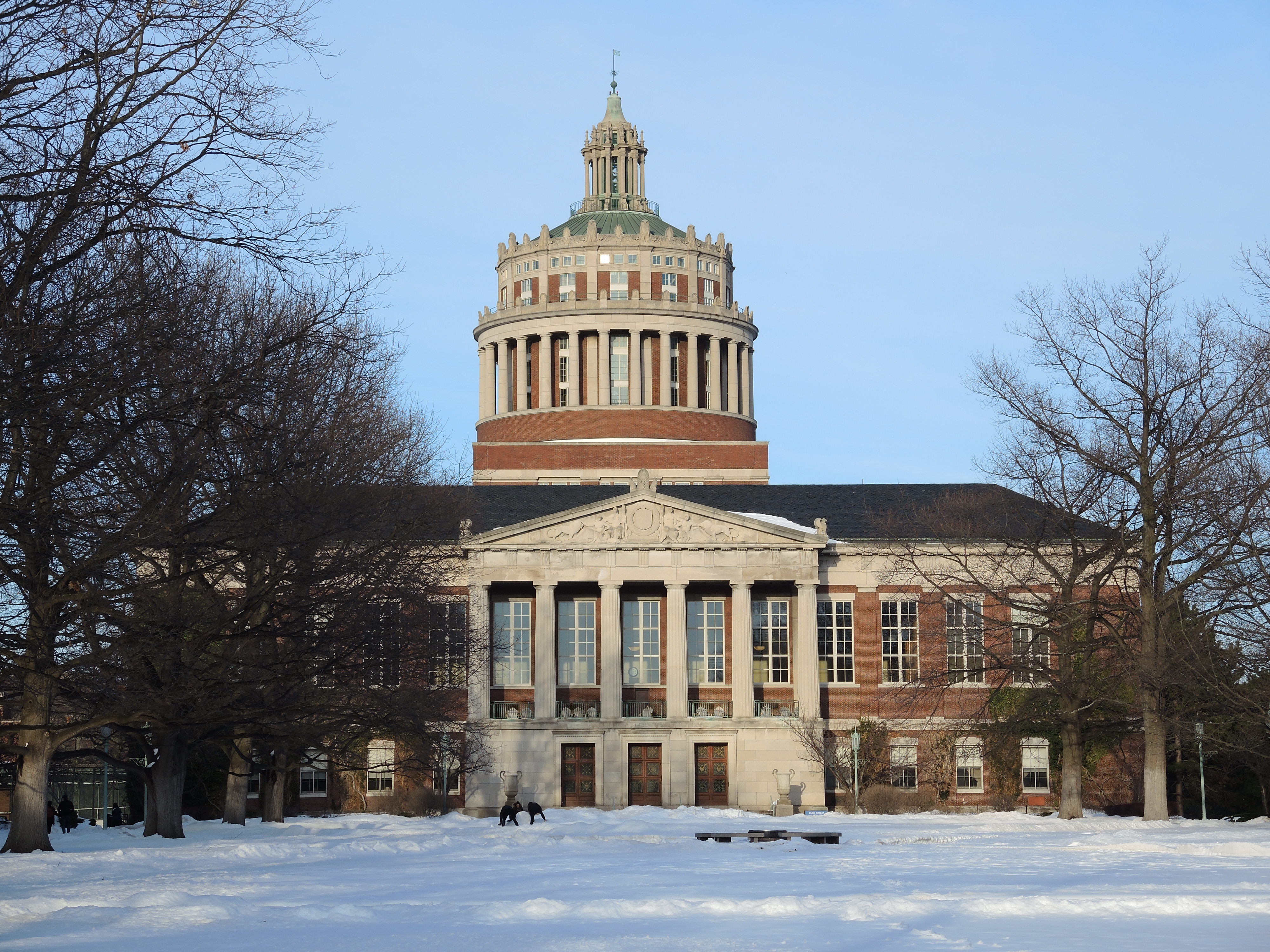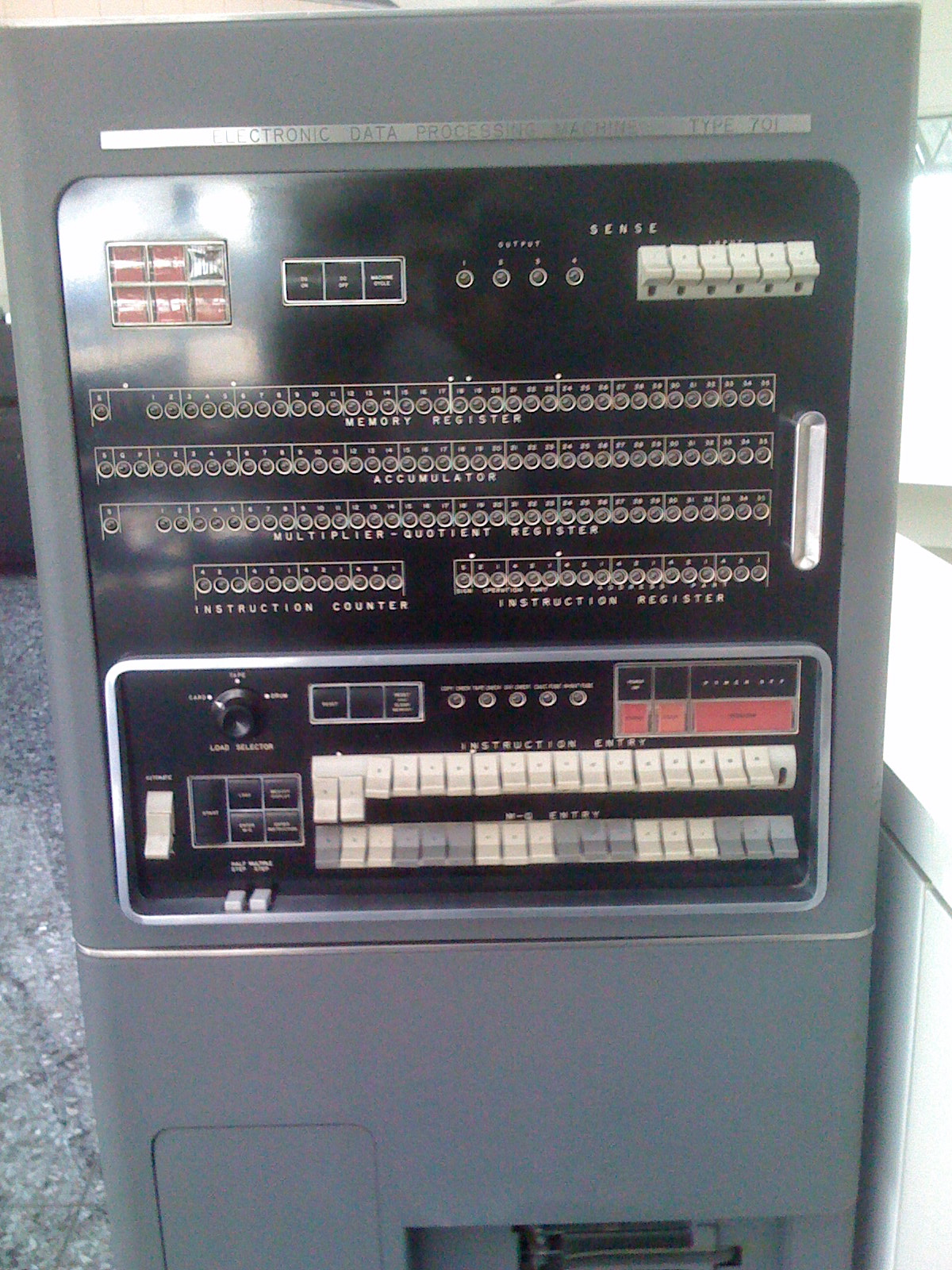|
IBM 7700 Data Acquisition System
The IBM 7700 Data Acquisition System was announced by IBM on December 2, 1963. It is capable of collecting data from as many as 32 sources simultaneously, process the data and transmit results to up to 16 remote printers, display units or plot boards. The IBM 7700 was short-lived, being replaced by the IBM 1800 Data Acquisition and Control System on November 30, 1964. Two IBM 7700 Data Acquisition Systems are known to have existed: one at the University of Rochester and the other at Stanford University. Both were donated by IBM. The IBM 7700 is an 18-bit system, with instructions occupying two 18-bit words. Arithmetic instructions generally execute in two or three machine cycles, except for multiply, about 8 cycles, and divide, 12 cycles. A machine cycle is two microseconds. Address space In computing, an address space defines a range of discrete addresses, each of which may correspond to a network host, peripheral device, disk sector, a memory cell or other logical or p ... [...More Info...] [...Related Items...] OR: [Wikipedia] [Google] [Baidu] |
IBM 1800
The IBM 1800 Data Acquisition and Control System (DACS) was a process control variant of the IBM 1130 with two extra instructions (CMP and DCM), extra I/O capabilities, 'selector channel like' cycle-stealing capability and three hardware index registers. IBM announced and introduced the 1800 Data Acquisition and Control System on November 30, 1964, describing it as "a computer that can monitor an assembly line, control a steel-making process or analyze the precise status of a missile during test firing." Overview Unlike the 1130, which was a desk-like unit, the 1800 is packaged in 6 foot high, EIA Standard 19 inch racks, which are somewhat taller than the racks used by S/360 systems of the same vintage, but the internal gates and power supplies were very much the same. Many 1800 cabinets show a distinct "ding" on the vents at the top of the chassis, where movers discovered that the door into a computer room was not quite tall enough for the 1800 cabinet. The IBM 1500 inst ... [...More Info...] [...Related Items...] OR: [Wikipedia] [Google] [Baidu] |
IBM 1710
The IBM 1710 was a process control system that IBM introduced in March 1961. It used either a 1620 I or a 1620 II Computer and specialized I/O devices (e.g., IBM 1711 analog-to-digital converter and digital-to-analog converter, IBM 1712 discrete I/O and analog multiplexer, factory floor operator control panels). The IBM 1620 used in the 1710 system was modified in several ways, the most obvious was the addition of a very primitive hardware interrupt mechanism. The 1710 was used by paper mills, oil refineries and electric companies. See also * IBM 1720 *IBM 1800 References {{Reflist External links"Evolution of Small Real-Time IBM Computer Systems"(1.25 MB PDF file), from the IBM Journal of Research and Development. 1710 In the Swedish calendar it was a common year starting on Saturday, one day ahead of the Julian and ten days behind the Gregorian calendar. Events January–March * January 1 – In Prussia, Cölln is merged with Alt-Berlin by ... Comp ... [...More Info...] [...Related Items...] OR: [Wikipedia] [Google] [Baidu] |
IBM 1800 Data Acquisition And Control System
The IBM 1800 Data Acquisition and Control System (DACS) was a process control variant of the IBM 1130 with two extra instructions (CMP and DCM), extra I/O capabilities, 'selector channel like' cycle-stealing capability and three hardware index registers. IBM announced and introduced the 1800 Data Acquisition and Control System on November 30, 1964, describing it as "a computer that can monitor an assembly line, control a steel-making process or analyze the precise status of a missile during test firing." Overview Unlike the 1130, which was a desk-like unit, the 1800 is packaged in 6 foot high, EIA Standard 19 inch racks, which are somewhat taller than the racks used by S/360 systems of the same vintage, but the internal gates and power supplies were very much the same. Many 1800 cabinets show a distinct "ding" on the vents at the top of the chassis, where movers discovered that the door into a computer room was not quite tall enough for the 1800 cabinet. The IBM 1500 inst ... [...More Info...] [...Related Items...] OR: [Wikipedia] [Google] [Baidu] |
Data Acquisition
Data acquisition is the process of sampling signals that measure real-world physical conditions and converting the resulting samples into digital numeric values that can be manipulated by a computer. Data acquisition systems, abbreviated by the acronyms ''DAS,'' ''DAQ,'' or ''DAU,'' typically convert analog waveforms into digital values for processing. The components of data acquisition systems include: * Sensors, to convert physical parameters to electrical signals. * Signal conditioning circuitry, to convert sensor signals into a form that can be converted to digital values. * Analog-to-digital converters, to convert conditioned sensor signals to digital values. Data acquisition applications are usually controlled by software programs developed using various general purpose programming languages such as Assembly, BASIC, C, C++, C#, Fortran, Java, LabVIEW, Lisp, Pascal, etc. Stand-alone data acquisition systems are often called data loggers. There are also open-source sof ... [...More Info...] [...Related Items...] OR: [Wikipedia] [Google] [Baidu] |
University Of Rochester
The University of Rochester (U of R, UR, or U of Rochester) is a private university, private research university in Rochester, New York. The university grants Undergraduate education, undergraduate and graduate degrees, including Doctorate, doctoral and professional degrees. The University of Rochester enrolls approximately 6,800 undergraduates and 5,000 graduate students. Its 158 buildings house over 200 academic majors. According to the National Science Foundation, Rochester spent more than $397 million on research and development in 2020, ranking it 66th in the nation. With approximately 28,000 full-time employees, the university is the largest private employer in Upstate New York and the 7th largest in all of New York (state), New York State. The University of Rochester College of Arts Sciences and Engineering, College of Arts, Sciences, and Engineering is home to departments and divisions of note. The Institute of Optics was founded in 1929 through a grant from Eastm ... [...More Info...] [...Related Items...] OR: [Wikipedia] [Google] [Baidu] |
Stanford University
Stanford University, officially Leland Stanford Junior University, is a Private university, private research university in Stanford, California. The campus occupies , among the largest in the United States, and enrolls over 17,000 students. Stanford is considered among the most prestigious universities in the world. Stanford was founded in 1885 by Leland Stanford, Leland and Jane Stanford in memory of their only child, Leland Stanford Jr., who had died of typhoid fever at age 15 the previous year. Leland Stanford was a List of United States senators from California, U.S. senator and former List of governors of California, governor of California who made his fortune as a Big Four (Central Pacific Railroad), railroad tycoon. The school admitted its first students on October 1, 1891, as a Mixed-sex education, coeducational and non-denominational institution. Stanford University struggled financially after the death of Leland Stanford in 1893 and again after much of the campus was ... [...More Info...] [...Related Items...] OR: [Wikipedia] [Google] [Baidu] |
Address Space
In computing, an address space defines a range of discrete addresses, each of which may correspond to a network host, peripheral device, disk sector, a memory cell or other logical or physical entity. For software programs to save and retrieve stored data, each datum must have an address where it can be located. The number of address spaces available depends on the underlying address structure, which is usually limited by the computer architecture being used. Often an address space in a system with virtual memory corresponds to a highest level translation table, e.g., a segment table in IBM System/370. Address spaces are created by combining enough uniquely identified qualifiers to make an address unambiguous within the address space. For a person's physical address, the ''address space'' would be a combination of locations, such as a neighborhood, town, city, or country. Some elements of a data address space may be the same, but if any element in the address is different, a ... [...More Info...] [...Related Items...] OR: [Wikipedia] [Google] [Baidu] |
IBM 700/7000 Series
The IBM 700/7000 series is a series of large-scale (mainframe) computer systems that were made by IBM through the 1950s and early 1960s. The series includes several different, incompatible processor architectures. The 700s use vacuum-tube logic and were made obsolete by the introduction of the transistorized 7000s. The 7000s, in turn, were eventually replaced with System/360, which was announced in 1964. However the 360/65, the first 360 powerful enough to replace 7000s, did not become available until November 1965. Early problems with OS/360 and the high cost of converting software kept many 7000s in service for years afterward. Architectures The IBM 700/7000 series has six completely different ways of storing data and instructions: *First scientific (36/18-bit words): 701 (Defense Calculator) *Later scientific (36-bit words, hardware floating-point): 704, 709, 7040, 7044, 7090, 7094 *Commercial (variable-length character strings): 702, 705, 7080 * 1400 series (variab ... [...More Info...] [...Related Items...] OR: [Wikipedia] [Google] [Baidu] |



